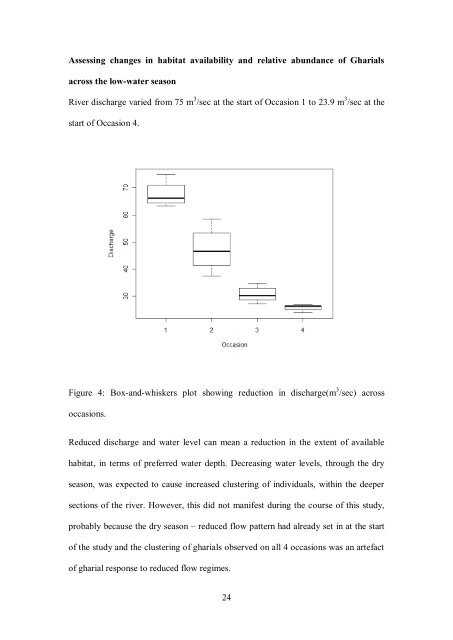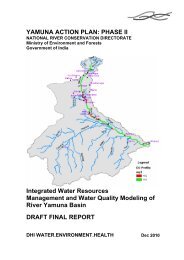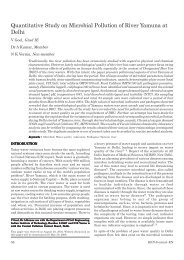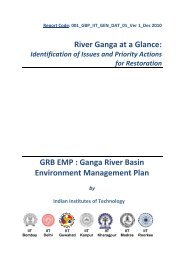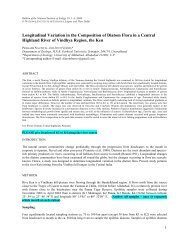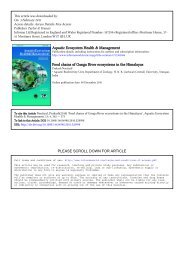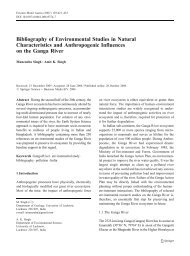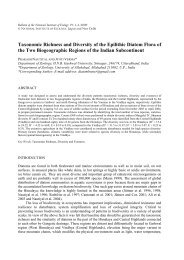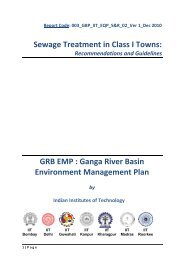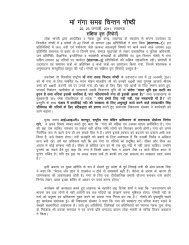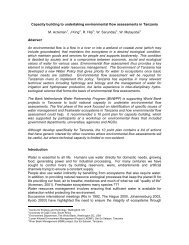Ecological and anthropogenic covariates ... - GANGAPEDIA
Ecological and anthropogenic covariates ... - GANGAPEDIA
Ecological and anthropogenic covariates ... - GANGAPEDIA
You also want an ePaper? Increase the reach of your titles
YUMPU automatically turns print PDFs into web optimized ePapers that Google loves.
Assessing changes in habitat availability <strong>and</strong> relative abundance of Gharials<br />
across the low-water season<br />
River discharge varied from 75 m 3 /sec at the start of Occasion 1 to 23.9 m 3 /sec at the<br />
start of Occasion 4.<br />
Figure 4: Box-<strong>and</strong>-whiskers plot showing reduction in discharge(m 3 /sec) across<br />
occasions.<br />
Reduced discharge <strong>and</strong> water level can mean a reduction in the extent of available<br />
habitat, in terms of preferred water depth. Decreasing water levels, through the dry<br />
season, was expected to cause increased clustering of individuals, within the deeper<br />
sections of the river. However, this did not manifest during the course of this study,<br />
probably because the dry season – reduced flow pattern had already set in at the start<br />
of the study <strong>and</strong> the clustering of gharials observed on all 4 occasions was an artefact<br />
of gharial response to reduced flow regimes.<br />
24


